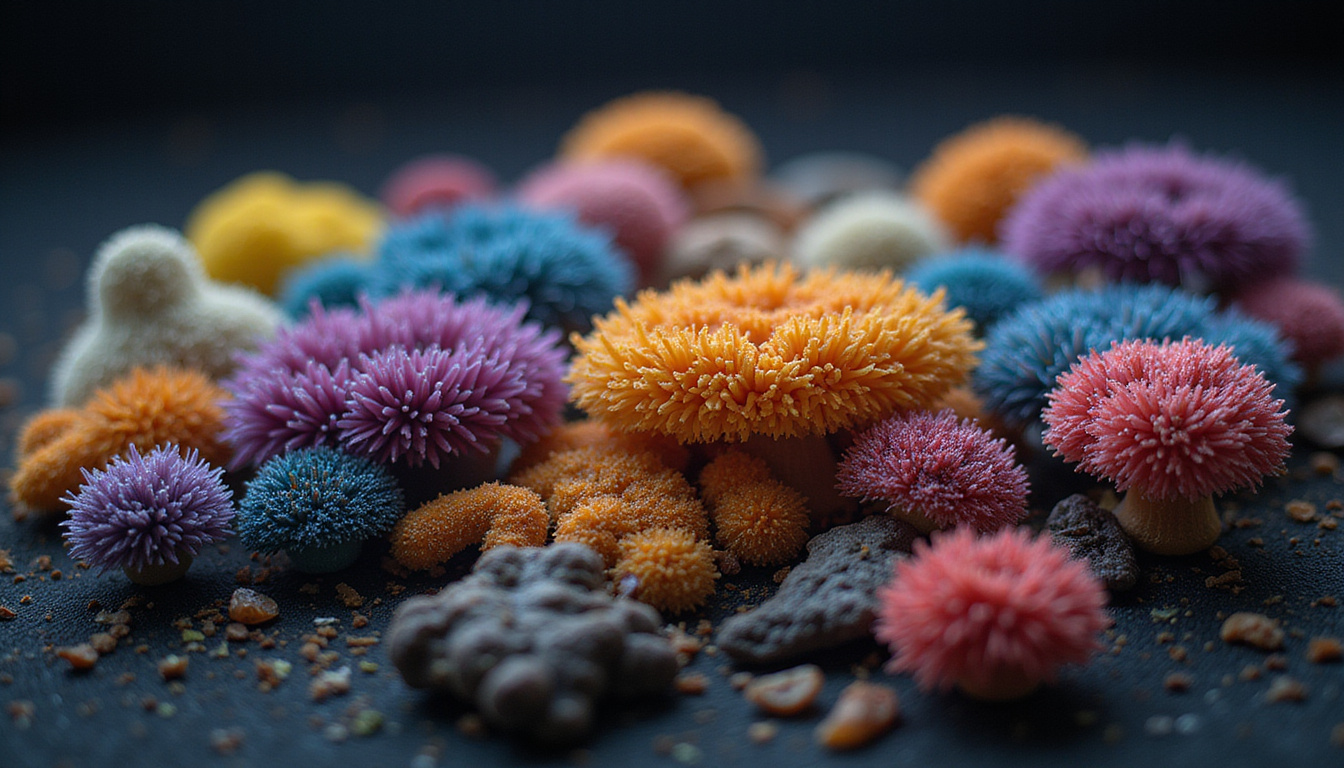Embarking on the journey of mycology means you study fungi. Start with the building blocks—mycology spores. These tiny cells help fungi live and grow. They let fungi reproduce and spread. Spores work much like seeds in plants. If you are new to mushroom growing or wish to study fungi, learn about spores. This guide shows what spores are, their types, how to use them, and some safe tips.
What Are Mycology Spores?
Mycology spores are tiny cells that help fungi continue their life. Think of spores as a seed for fungi. They carry the genetic code needed for new growth. Spores are small, light, and move easily by wind, water, or animals. In nature, spores help fungi survive hard times. They let fungi spread out and form new groups. For mushroom growers and researchers, spores start the process of life.
Types of Mycology Spores
Fungi make different spores by using various methods. The most common types include:
1. Basidiospores (Basidiomycetes)
- Produced by: Mushrooms, toadstools, and shelf fungi.
- Form on: Special cells called basidia.
- They come in groups (often six) and in large numbers.
- They are key for mushroom growing.
2. Ascospores (Ascomycetes)
- Produced by: Yeasts, truffles, and morels.
- Form inside: Sac-like structures called asci.
- They come from sexual reproduction.
- Some farms use them to grow fungi.
3. Zygospores (Zygomycetes)
- Produced by: Bread molds like Rhizopus.
- Form by: Joining two special hyphal parts.
- They usually form when food is low.
4. Conidiospores (Conidia)
- Produced by: Several types of molds.
- Form on: The ends of short hyphal cells.
- They spread quickly in the air.
Understanding these types helps you identify fungi and plan your work.
The Lifecycle of Spores in Mycology
Spores start a clear cycle in fungi:
- Spore Dispersal: Spores leave the parent fungus.
- Germination: In a good spot, spores start growing.
- Hyphal Growth: They form hyphae. These thin threads grow and connect.
- Fruiting: The hyphae make a body like a mushroom.
- Reproduction: The new body makes more spores. The cycle repeats.
How to Work with Mycology Spores: A Beginner’s Guide
Handle spores with care. Follow these simple steps:
1. Collecting Spores
- Use a clean, sterile tool. Gently scrape spores from a mature mushroom.
- Or try the spore print technique: Put a mushroom cap, gills down, on a clean paper or glass. Cover it with a cup. Wait several hours for a spore print.
2. Preparing Spore Syringes
- Mix spores with clean water in a syringe.
- This lets you place spores precisely on your growing medium.
3. Sterile Working Environment
- Always work in a clean space.
- Wear gloves, clean your work surface, and use a mask if needed.
4. Inoculating Substrates
- Common substrates are sawdust, straw, or special mushroom mixes.
- Inject the spore mix into the substrate under sterile conditions.
5. Incubation and Care
- Keep the inoculated substrate in a room with the right humidity and temperature.
- Look for mycelium—this shows that spores have grown.
Tips for Successful Mycology Spore Cultivation
- Use high-quality spores from trusted sources.
- Stay sterile to avoid contamination.
- Record your steps so you can learn what works best.
- Be patient; growth from spores can take days or weeks.
Common Challenges and How to Overcome Them
| Challenge | Solution |
|---|---|
| Contamination with molds or bacteria | Work in clean conditions, disinfect tools, and keep proper incubation settings. |
| Low germination rate | Use fresh spores and handle them with care. |
| Slow growth | Adjust temperature, humidity, and substrate quality for the species. |
Frequently Asked Questions About Mycology Spores
1. What is the best way to collect mycology spores for cultivation?
For beginners, the spore print method works best. Place a mature mushroom cap on a clean surface, cover it, and wait 24–48 hours for spores to form.
2. Are mycology spores safe to handle?
Generally, yes. However, some wild spores can be toxic or cause allergies. Always use protective gear and get spores from trusted sources.
3. Can I grow mushrooms from spores purchased online?
Yes. Many trusted companies sell spores for cultivation. Follow sterile procedures and proper incubating steps for the best results.
External Resources for Further Learning
For more guidance on spores and mushroom growing, visit USDA Mycology Resources or read books like Mycelium Running by Paul Stamets for more insight into fungal spores and cultivation techniques.
Conclusion: Embrace the Fascination of Mycology Spores
Learning about mycology spores is the first step into the world of fungi. Whether you want to grow mushrooms, study natural ecosystems, or simply explore nature’s variety, knowing about spores is key. With clean techniques, patience, and a curious mind, you can unlock the secrets of these tiny cells.

Start your mycology journey today—spore by spore—and watch fungi thrive under your care!

Leave a Reply